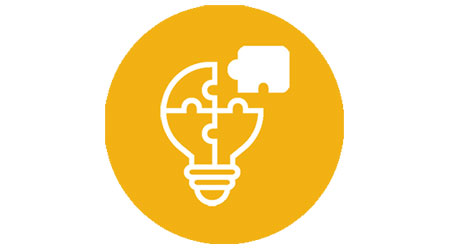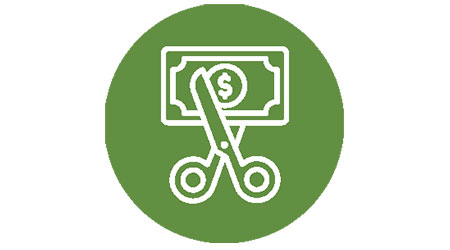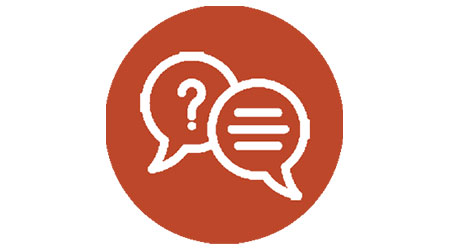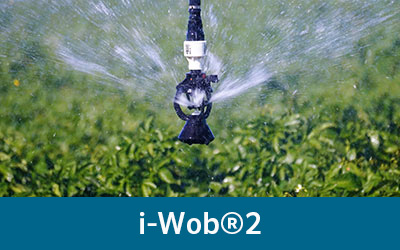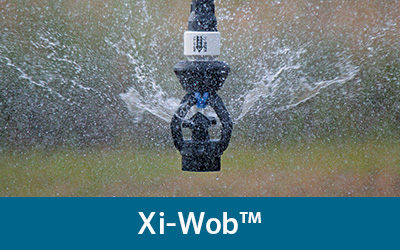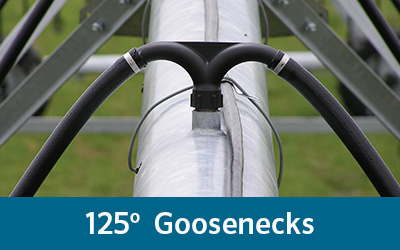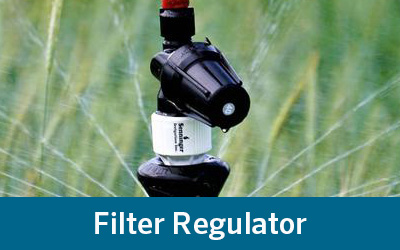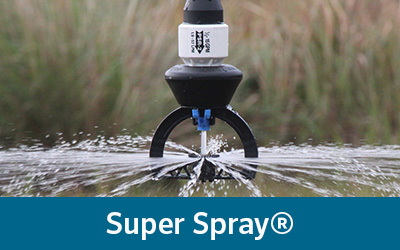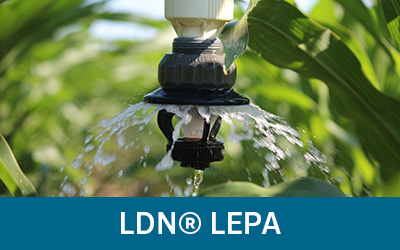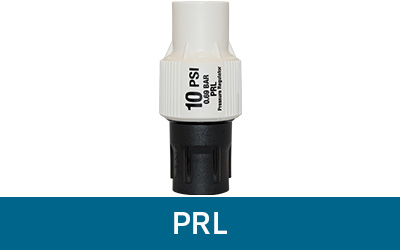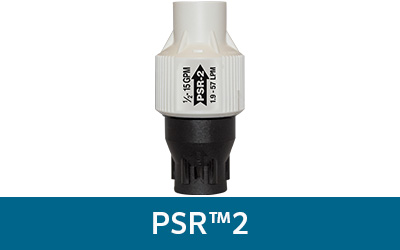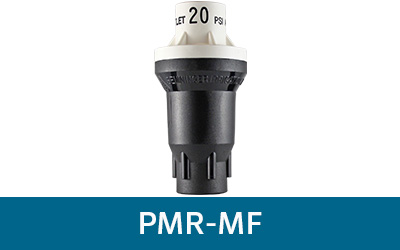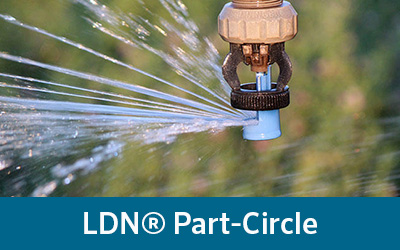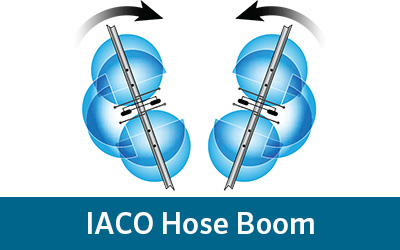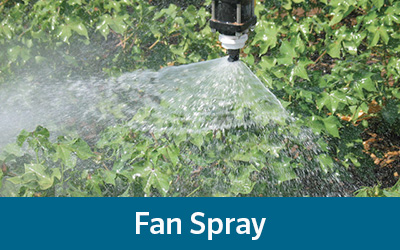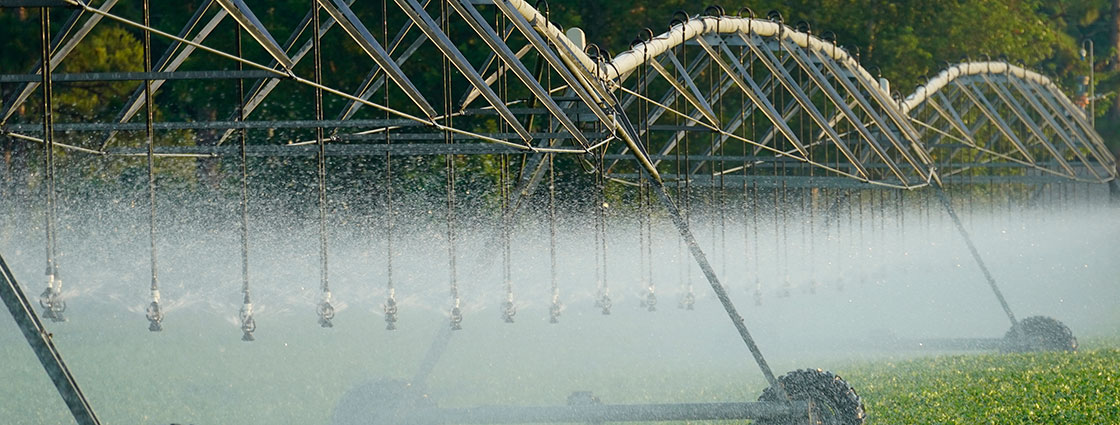
As pioneers in the industry, we provide an expansive range of center pivot sprinklers and components tailored to meet diverse agricultural needs. Senninger's multiple options in mechanized irrigation – from the Wobbler heads to LEPA bubblers – can sometimes seem overwhelming. That's where we come in.
This guide is designed to simplify your choices and deepen your understanding. Whether you're a distributor seeking clarity for your clients or a farmer looking for the most efficient irrigation method, our mission is to help you navigate the sea of options with ease. Featuring a comprehensive blend of experts' recommendations, testimonials, courses, and FAQs, you'll soon identify the Senninger solution that perfectly matches your field requirements.
Ready to optimize your center pivot irrigation? Dive right in!
Addressing Irrigation Challenges with Senninger Solutions
Every farmer knows the challenges and unpredictabilities that come with nurturing the land. These challenges can sometimes be daunting when it comes to center pivot irrigation. From the erosive consequences of runoff to the complexities of managing fields under high winds and low humidity, we understand the complexities that farmers face daily. Poor water quality, limited water availability, uneven crop growth, and the often frustrating wheel track rutting can disrupt your daily operations and, ultimately, your yields.
But here's the silver lining: at Senninger, we don't just acknowledge these challenges; we actively work towards overcoming them. Our carefully designed and precision-engineered products aim to address these specific issues, providing efficient and sustainable solutions for your fields. In this section, we'll walk you through each problem and introduce you to Senninger products tailor-made to turn these challenges into opportunities for growth. With our expertise at your side, irrigation woes become a thing of the past. Let's journey together towards a more fruitful and efficient future.
SOLUTIONS FOR RUNOFF AND EROSION
Sprinklers can preserve or damage soils and small seeded crops based on the intensity of their application pattern. No matter which center pivot sprinkler you use, our recommendation has always been to choose one that distributes water instantaneously and uniformly over a large wetted area. This type of distribution helps preserve the soil’s intake rate and ability to absorb water, while reducing the potential for runoff and erosion.
Try these Senninger pivot sprinklers and components.
-
The i-Wob2 provides the most uniform water distribution compared to any pivot applicator on the market.
Installation: Flexible hose drops
Droplet Size: Small, Medium, or Large
-
The Xi-Wob takes the instantaneous, uniform distribution pattern popularized by the i-Wob2 to semi-rigid PE and steel drops.
Installation: Semi-rigid, steel and PE drops
Droplet Size: Small, Medium, or Large
-
Installing double 125° goosenecks allows the flow from each outlet to be divided in half for two sprinklers on either side of the mainline. This doubling of drops is used to convert wider spacing machines to closer drop spacing.
SOLUTIONS FOR POOR WATER QUALITY
Sprinklers are made to run for years without significant degradation in performance. However, the abrasive materials in unfiltered water can shorten a sprinkler’s life. Sediments or abrasive materials passing through a sprinkler nozzle can wear out the orifice – distorting its shape, causing poor uniformity and over application. Plus, areas with high silt volume or iron content in the water may also have issues with premature wear or plugging.
Sprinklers and components with a large flow path and plenty of space between the nozzle and their deflector are the best suited to these conditions since abrasive material is less likely to get stuck in the product.
Try these Senninger pivot sprinklers and components.
-
Senninger® black and white pressure regulators are renowned for their accuracy, durability, and ability to maintain consistent outlet pressure with varying inlet pressure. Combining that performance with reduced nozzle clogging provides a solution for overall efficiency of an irrigation system
-
The i-Wob2 lasts longer in the field than its predecessor, thanks to improvements that make it capable of better withstanding harsh operating conditions, including poor water quality, chemicals, and effluent water.
Installation: Flexible hose drops
Droplet Size: Small, Medium, or Large
-
The Senninger Super Spray is ideal for irrigating with poor quality water (unfiltered surface water, effluent solutions, etc.) due to the large distance between the nozzle and deflector pad, and the deflector pad and the bracket. The two-legged bracket design minimizes build-up of water-borne solids
Installation: Can be mounted on top-of-pipe or on hose drops
SOLUTIONS FOR LIMITED WATER AVAILABILITY
Global issues like declining water availability and high energy costs are becoming a major concern for irrigators in a world affected by dwindling natural and energy resources. Many center pivot irrigators are now turning to LEPA irrigation practices as a way to make the most out of every drop pumped.
LEPA systems use low-pressure bubbler heads to deposit water directly into furrows just 8 to 18 inches above the ground. With the heads closer to the ground, the water avoids the hitting leaves, so it does not come in contact with plants and fruit susceptible to water borne diseases and nearly all of it is absorbed by the soil.
Try these Senninger LEPA options.
-
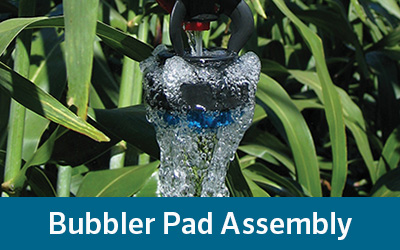
The Bubbler Pad Assembly produces a narrow, aerated stream of bubbling water that resists high temperatures and strong winds. This sprinkler avoids wetting the foliage by depositing water directly into the furrows.
-
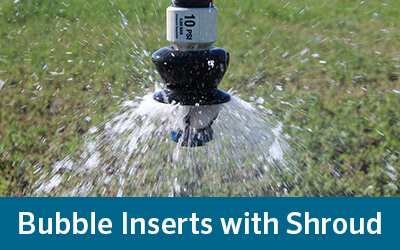
The Shroud gently directs water downward in a wide, dome-shaped pattern, providing complete field coverage. It is suitable for germination, low crop watering, and delicate soils vulnerable to compaction.
-
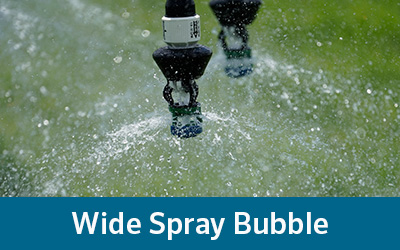
The Wide Spray Bubble provides the low-pressure water-saving efficiencies of LEPA application while achieving total coverage for 30” to 60” spacing.
Installation: The LDN LEPA applicators can be mounted on flexible hose drops, rigid Polyethylene drops, or galvanized steel drops. Mount the LEPA sprinklers no less than 8 to 18 inches (0.20 to 0.45 m) above the ground. To prevent overwatering, LDN LEPA applicators should be installed with wider spacing on the first few spans until the flow from closer spaced applicators (40 inches or less) matches soil need.
SOLUTIONS FOR HIGH WINDS & LOW HUMIDITY
Sprinklers need to retain the shape of their application pattern in order to irrigate uniformly in windy conditions and high temperatures. The key to maintaining a sprinkler’s pattern begins with adequately sized and relatively uniform droplets. Though some water may ultimately be lost in excessively windy conditions, a sprinkler’s wetted pattern will not lose its shape with adequately sized droplets. Water-efficient sprinklers provide an even droplet size large enough to resist strong wind conditions and evaporation, but not so large as to disrupt the soil.
Try these Senninger pivot products.
-
The i-Wob2's consistently sized droplets maintain their integrity in windy conditions and minimize evaporation loss.
Installation: Flexible hose drops
Droplet Size: Small, Medium, or Large
-
In windy conditions, the Xi-Wob's consistent-sized droplets are more evaporation-resistant and aid in maintaining the integrity of the sprinkler pattern.
Installation: Semi-rigid, steel and PE drops
Droplet Size: Small, Medium, or Large
-
LEPA systems gently deliver water from a height of 8 to 18 inches above the ground, without spraying, to combat wind-drift and prevent evaporation loss.
Installation: Flexible hose drops, rigid Polyethylene drops, or galvanized steel drops
Droplet Size: Large
SOLUTIONS FOR UNEVEN CROP GROWTH
Sprinklers are made to operate within a specific range of flows and pressures. They’ll maintain their application pattern and adequate droplet size as long as they can operate under normal conditions. This is why maintaining correct system pressure is essential for optimum distribution uniformity and proper flow through emitters. Pressure fluctuations alter a system’s flow rate and directly affect its uniformity, which leads to irregular crop growth.
Try these Senninger pivot pressure regulators.
-
The PRL (Pressure Regulator Low Flow) is ideal for installations requiring lower flows of 0.5 to 8.0 GPM.
Operating Pressure: 6 to 40 psi
-
The Senninger® PSR2 is designed to handle flows from 0.5 to 15 gpm.
Operating Pressure: 6 to 50 psi
-
The PMR-MF (Pressure-Master Regulator Medium-Flow) is ideal for installations requiring mid-range flows of 2 to 20 gpm.
Operating Pressure: 6 to 60 psi
SOLUTIONS FOR WHEEL TRACK RUTTING
Wheel tracks often develop into ruts as a result of excess water application near the towers. As tower wheels move over the wet soil, compaction occurs. The wetter the soil, the deeper the rut will be, and the more the soil compacts.
The best way to minimize wheel rutting is to simply keep irrigation water off the wheel tracks. To keep wheel tracks dry, mount pivots with boom systems that can spread out a sprinkler’s application over a larger area, or 180° part circle sprinklers directed away from the wheel tracks.
Try these Senninger pivot sprinklers and components.
-
The Senninger LDN Part-Circle is specifically designed to distribute water away from wheel tracks to minimize tracking.
Installation: For use on rigid drops only
-
Using IACO Boombacks™ lowers application intensity by widening the wetted area, which is especially important on overhangs and at pivot towers. This allows more time for water to infiltrate the soil, reducing wheel tracking, runoff, and surface soil compaction.
-
With its directional spray pattern, the Fan Spray is ideal for distributing water away from wheel tracks.
Installation: Used on rigid drops. It can be mounted upright or inverted
Cutting Operational Costs with Senninger Innovations
Center pivot irrigation cost is a concern for every farmer aiming for efficiency and sustainability. Recognizing this, Senninger has pioneered game-changing solutions to reduce these costs. Our patented Wobbler Technology™ and LEPA (Low Energy Precision Application) have been designed with a singular aim: to help farmers worldwide achieve significant water and energy savings. These innovations, tested and proven in the United States and globally, ensure that irrigation is effective and economical. Moreover, Senninger's leadership has consistently emphasized maintaining the correct system pressure in conserving water and energy. With Senninger at the helm, your center pivot irrigation becomes a blend of optimized costs and maximized efficiency.
Efficiency Meets Innovation: Senninger Wobbler Sprinklers for Center Pivot Irrigation
Senninger's Wobbler sprinklers are known to provide both efficiency and increased yield. Designed to tackle challenges like low water availability and rising energy costs, these sprinklers quickly become a staple for efficient irrigation.
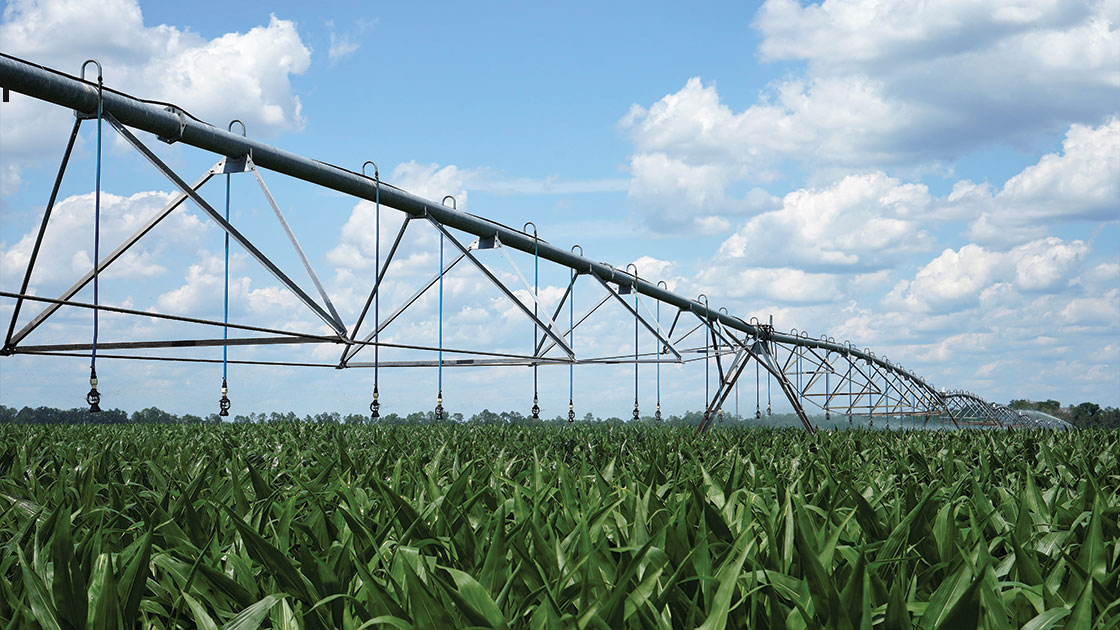
What Makes Wobbler Sprinklers Stand Out?
The ingenuity of Wobbler technology lies in its unique off-center rotary motion. This design ensures uniform water distribution over a broad diameter, maintaining its application pattern even in challenging conditions like wind-drift. This means that irrespective of external factors, Wobbler sprinklers maintain a consistent wetting pattern, reducing soil compaction and runoff.
Moreover, these sprinklers operate at low pressures (10 psi or 0.69 bar), translating into substantial energy savings for farmers. Depending on the system specifics, farmers can expect energy savings up to an impressive 50% with Wobbler sprinklers.
Senninger's range of Wobbler sprinklers comprises three primary models, each catering to different irrigation needs:
- i-Wob2: The latest offering in Wobbler technology, the i-Wob2, builds on its predecessor, the i-Wob UP3, offering longer durability and better performance. Its protective shroud, which shields the sprinkler from external elements and UV effects, also serves as a nozzle carrier. Equipped with four models that offer varied droplet sizes and trajectories, the i-Wob2 is versatile and suitable for almost any field condition.
- Xi-Wob: Designed with a counter-balance, the Xi-Wob is optimal for semi-rigid installations and even on flexible hose drops when used with a Senninger weight. Users can customize the droplet size based on soil needs, ensuring a wide coverage area at low operating pressure.
- Xcel-Wobbler TOP: Positioned along the center pivot's entire length, the Xcel-Wobbler TOP provides a gentle rain-like application suitable for diverse terrains and soil types. Paired with the 10-psi PSR2 pressure regulator, this sprinkler offers a cost-effective solution when compared to standard top-of-pipe solutions.
In conclusion, for farmers seeking to enhance their mechanized irrigation systems' efficiency while reducing operational costs, Senninger's Wobbler sprinklers present a compelling solution. With proven results and varied models to cater to different needs, these sprinklers are truly at the forefront of irrigation innovation. Look into their features and benefits in our comprehensive Guide to Senninger Wobbler Technology to make an informed decision for your fields.
Elevate Irrigation Efficiency with LEPA Technology
Farmers globally are on a relentless quest to ensure that every drop of water they use for irrigation finds its way to nourish crops. LEPA (Low Energy Precision Application) emerges as a trailblazing solution in this domain, optimizing water use, ensuring water reaches the root zone, and notably reducing center pivot irrigation costs.
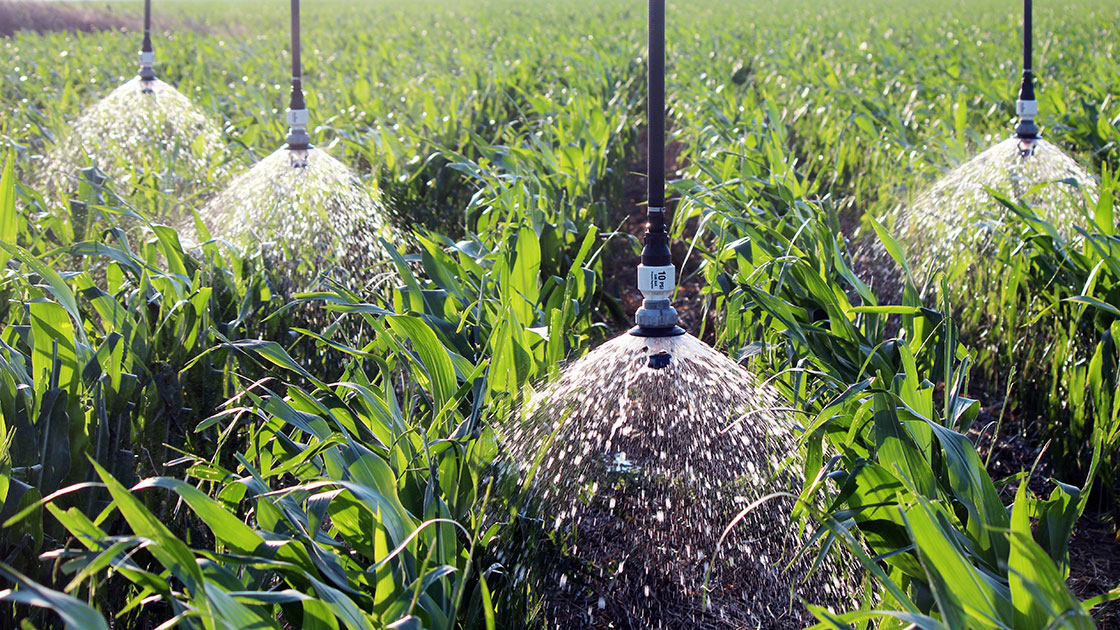
Understanding LEPA and Its Efficiency
LEPA irrigation is not merely a method; it's an innovation. By deploying low-pressure LEPA bubble applicators, a striking advantage is observed: over 20% more water reaches the soil surface when compared to the conventional spray heads. With LEPA Bubbler sprinklers dispensing water directly from a height between 8 to 18 inches (20 to 46 cm) above the soil, the water's journey to the ground is swift. This direct approach effectively counters losses from wind and evaporation, especially in areas prone to high temperatures or strong winds.
Moreover, with operational pressures as low as 6 to 20 psi (0.41 to 1.38 bar), farmers can relish not only water savings but significant energy savings as well.
Advancements in LEPA: The Close Spacing Method
While traditional LEPA installations had sprinkler applicators placed considerably apart, modern innovations have introduced the Close Spacing method. Here, low-energy bubbler heads are strategically positioned 30 to 40 inches (0.75 to 1 m) apart. The result? An astounding 95 to 98% of the pumped water is channeled directly to the crop's root zone, ensuring efficient and precise water utilization.
Why Choose LEPA? The Distinct Advantages
- Uniform Root Zone Coverage: LEPA's bubble application shields against wind-drift and evaporation, ensuring optimal water delivery, especially in challenging conditions.
- Economical Operation: The reduced operational pressures not only enhance irrigation efficiency but are also instrumental in cutting down energy costs.
- Plant Health: LEPA ensures that water avoids wetting the plant canopy in row crops, mitigating risks associated with foliar diseases.
- Minimized Operational Strain: Given that LEPA efficiently fills the soil profile, center pivots necessitate fewer passes, reducing wear and tear.
- Augmented Yields: Many growers attribute their increased yields directly to LEPA irrigation.
- Maintenance Benefits: By preventing water from touching the towers, bubblers help reduce wheel track issues. Moreover, the direct water application lowers the likelihood of rodent damage to crops, fields, and equipment, a problem often associated with drip systems.
In summary, LEPA technology in center pivot irrigation is a paradigm of innovation meeting efficiency. For farmers focused on achieving the best yields while being environmentally conscious and cost-effective, LEPA stands out as a preferred choice. Explore the depths of LEPA technology in our guide to LEPA Close Spacing Irrigation and discover how it can revolutionize your irrigation strategy.
Maximizing Irrigation Efficiency with Pressure Regulators
In the realm of agriculture, every drop of water is invaluable, making the role of pressure regulators pivotal in center pivot irrigation systems. These regulators act as the guardians of your irrigation infrastructure, ensuring each segment operates in its optimal zone, leading to maximized water efficiency and reduced operational costs.
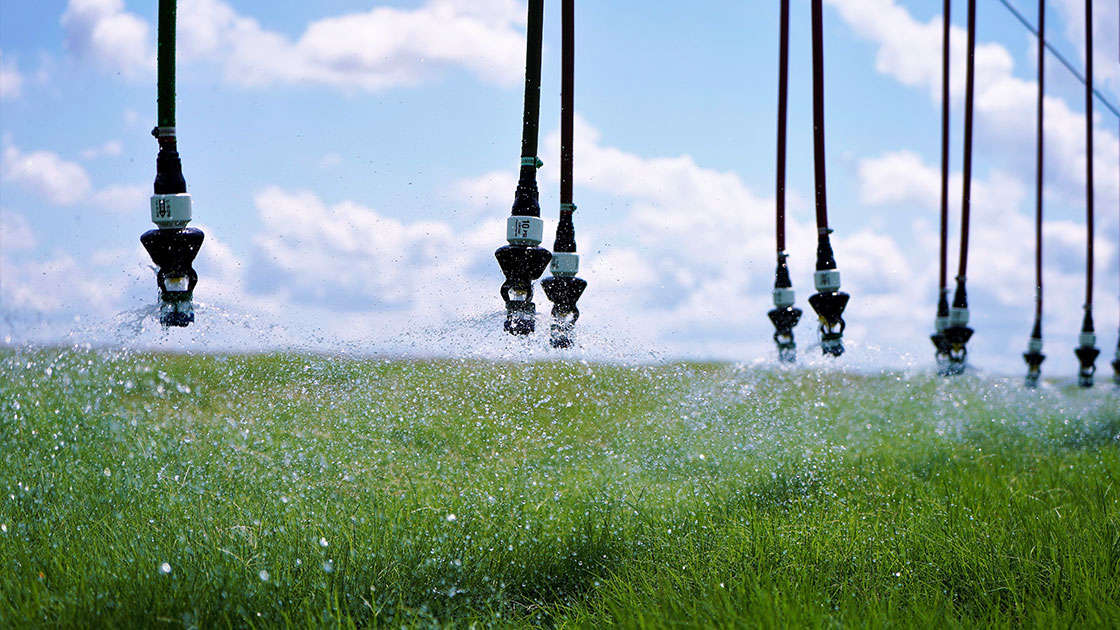
The Role of Pressure Regulators in Pivot Irrigation
Pressure regulators are instrumental in maintaining the uniformity of water distribution across the pivot line, enabling crops to receive the right amount of water when they need it the most. A pivot system without a regulator can result in uneven water distribution, translating to either over or under-watering. This, in turn, can affect the longevity and efficiency of the sprinklers, reducing their lifespan and thereby diminishing the return on investment.
Furthermore, without the right pressure, there's a risk of inconsistent fertilizer and chemical application, which can stunt crop growth and diminish yields. In essence, without effective pressure regulation, farmers might be unknowingly squandering resources and potential profits.
Enhancing Efficiency with Low-Pressure Systems
Modern pivot and linear irrigation systems have leaned into efficiency, utilizing low-pressure sprinklers and pressure regulators to optimize water and energy consumption. Products like Senninger Wobblers or LEPA bubblers, operating under low pressure, excel in water conservation by mitigating losses from wind drift, evaporation, and runoff. Given the reduced horsepower requirements, the direct benefit of operating at reduced pressure is the significant cut down in energy consumption. This not only contributes to monetary savings but also ensures a longer lifespan for the system components, reducing the frequency of repairs and replacements.
Why Invest in Pressure Regulators?
While integrating new pressure regulators might appear as an additional expense, their long-term benefits are undeniable. Compared to the potential financial drain from wasted resources and compromised crop yields, the investment in pressure regulators is a wise financial and operational decision. These regulators amplify the effectiveness of each water drop, promoting enhanced crop yields and ensuring a sustainable, efficient farming practice.
In summary, pressure regulators are not just components but catalysts that drive the efficiency of center pivot irrigation systems. Every farmer aiming to achieve optimum yields while being judicious about resource utilization should consider the integration of pressure regulators as a priority. Dive deeper into the world of pressure regulation with our comprehensive Guide to Irrigation Pressure Regulator, and set your farm on the path of maximized productivity.
Customer Testimonials: Success in Field Irrigation with Senninger
Hear directly from those who've experienced the difference Senninger brings to field irrigation. In this section, our valued customers from the U.S. and across the globe share their stories of enhanced center pivot irrigation success with Senninger products. Dive into these testimonials and discover real-world results.
Kansas Farmer Slashes Water Usage and Maintenance Costs with LEPA Bubbler
In Kansas, where the Ogallala Aquifer is under increasing strain, farmer Dwayne is leading the way in water conservation.
One day, Dwayne heard about LEPA bubblers and decided to give them a try. He installed a LEPA system on his farm and was immediately impressed with the results.
"We have a responsibility to ourselves and our next generations to get the most efficient use of water we can," Dwayne says. "It is substantial how the bubblers can actually help us reduce irrigation but actually increase its efficiency."
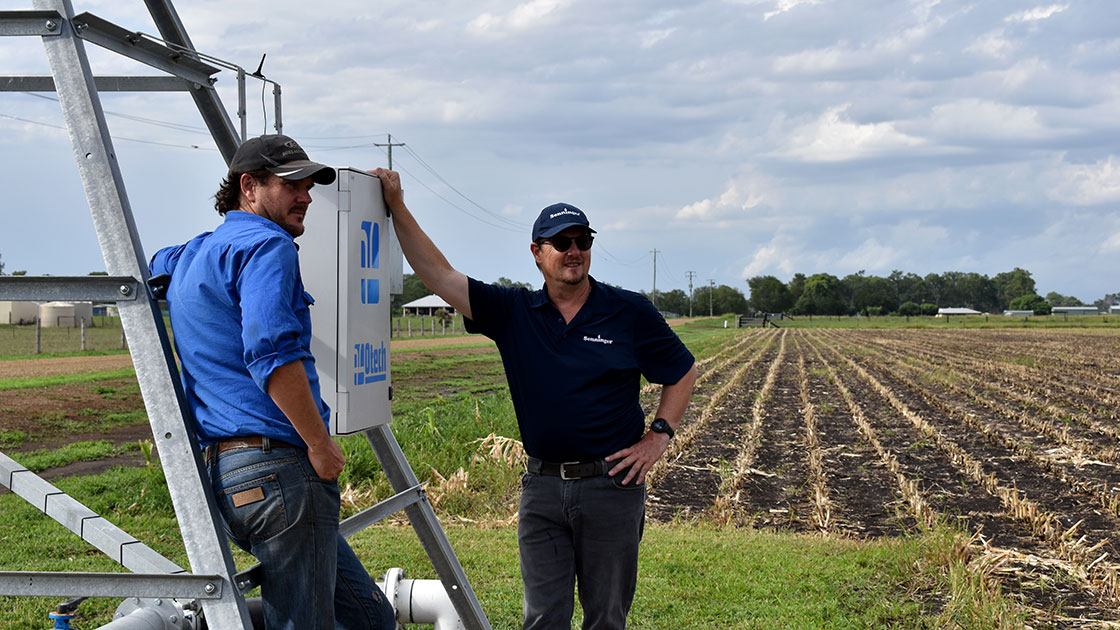
Australian Corn Farmer Slashes Energy Costs with New Pivot Sprinklers
In the arid Australian Outback, every drop of water and every watt of energy counts. That's why corn farmer Ryan Leatch was excited to try out the new I-WOB2 sprinklers from Senninger.
The I-WOB2 sprinklers are designed to be more efficient than traditional sprinklers, using up to 30% less water and energy. Ryan installed the new sprinklers on his cornfields, and he was immediately impressed with the results.
"I've been able to reduce my energy costs by 319 AUD per year since I switched to the i-Wob2 sprinklers," Ryan says. "That's a significant saving, especially in a dry climate like mine."
Saving Water, Increasing Yields with LEPA Close Spacing Irrigation
Farmers in the dry West increasingly turn to LEPA Close Spacing irrigation to boost yields and conserve water.
One farmer who has experienced the benefits of LEPA close spacing irrigation is John Maurer. John grows alfalfa on his farm in California. He installed a LEPA close spacing irrigation system a few years ago, and he's been thrilled with the results.
"I've been able to save a significant amount of water since I switched to LEPA close spacing irrigation," John says. "I've also seen a big increase in my alfalfa yields. My alfalfa is now healthier and more productive than ever before."
Online Training Courses
Become an expert on center pivot irrigation by signing up for our FREE online training courses today.
 Wobbler Technology
Wobbler Technology
Discover the differences between Senninger's Wobbler products for pivot irrigation, how to select a model, the best practices for installing these sprinklers, as well as troubleshooting tips.
KEY TOPICS
- Selecting the ideal deflector pad model for a customer's field
- Identifying when an i-Wob2 or an Xi-Wob is needed
- Installing Wobblers in different configurations
- Common causes and solutions for stalling, uneven crop growth, and breakage
- How Wobbler technology works
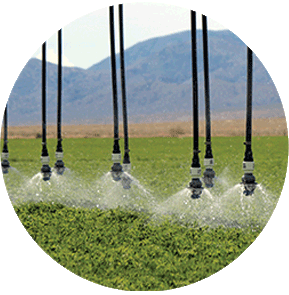 LEPA & LESA Close Spacing
LEPA & LESA Close Spacing
Learn the basics of LEPA and LESA irrigation and the best practices for installing these systems. Discover the many sprinkler options available today and how farmers are using these to save water, conserve energy and increase yields.
KEY TOPICS
- How LEPA and LESA conserve water and energy
- Differentiating between LEPA and LESA
- Selecting the best applicator for your customer's field
- Identifying if a field can handle LEPA irrigation
- How closer spacing enhances the technology
- Real-world examples of LEPA and LESA users across America
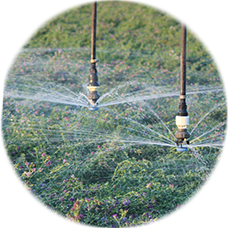 LDN Technology
LDN Technology
Learn the basics of LDN spray technology including how to select a spray pad, when to use multiple pads, how to convert from spray mode to LEPA or chemigation mode, and best installation practices.
KEY TOPICS
- How to switch from spray mode to LEPA mode
- Understanding double and triple pads
- Installing LDN sprinklers in different configurations
- How to select the right deflector pad
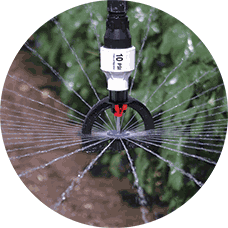 Spray Technology
Spray Technology
Get a quick recap of Senninger sprays. Learn about their common uses and how to install these products on a pivot.
KEY TOPICS
- Uses and benefits of the Senninger Super Spray, End Spray, and Fan Spray
- How to install Senninger’s various sprays on pivots
- Selecting a Super Spray Pad
Get Started
Visit Senninger's Online Training Site. All our courses are certified by the Irrigation Association and worth one continuing education credit (CEU) toward your annual re-certification. We're constantly updating our course catalog, so check back regularly!
Create an account and begin your education on Hunter's University.
FAQs
IS CENTER PIVOT IRRIGATION SUSTAINABLE?
Yes, center pivot irrigation can be sustainable, especially when combined with modern technologies like pressure regulators, low-pressure sprinklers, and advanced monitoring systems. These innovations help reduce water and energy consumption, ensuring efficient water application and minimizing waste.
HOW EFFICIENT IS CENTER PIVOT IRRIGATION?
Center pivot irrigation is highly efficient, often achieving water application efficiencies of 85% or higher. When paired with advanced technologies like pressure regulators and low-pressure sprinklers, it can minimize evaporation, runoff, and wind drift, further enhancing its efficiency.
WHAT IS THE DOWNSIDE OF A CENTER PIVOT IRRIGATION SYSTEM?
The primary downside of a center pivot irrigation system is its inability to irrigate the corners of square or rectangular fields, leading to unirrigated patches. Additionally, the initial investment for installation can be high, and it might not be suitable for fields with obstacles or irregular shapes.
HOW DOES A CENTER PIVOT IRRIGATION SYSTEM MOVE?
A center pivot irrigation system moves in a circular manner around a fixed central point, usually powered by electric motors fitted on wheeled towers. These towers follow a set path and allow the irrigation equipment to rotate around the field, distributing water evenly as it goes.
CAN CENTER PIVOTS WORK IN HILLY FIELDS?
Yes, center pivots can operate on hilly fields. Modern systems are designed with flexible spans and jointed towers that allow them to navigate varying terrains, including mild to moderate slopes. However, extremely steep terrains might require specialized design considerations.
WHERE IS CENTER PIVOT IRRIGATION USED?
Center pivot irrigation is used globally in areas where large-scale, mechanized irrigation is feasible and beneficial. It's commonly employed in regions with vast agricultural lands, including many parts of the United States, Australia, Brazil, and Egypt.
WHAT CROPS CAN BE IRRIGATED WITH A CENTER PIVOT IRRIGATION SYSTEM?
Center pivot irrigation systems are versatile and can irrigate various crops, including corn, soybeans, wheat, alfalfa, and many other field crops. With the right equipment and configurations, they can also support specialty crops, pastures, and forage lands.
WHAT IS THE LIFE EXPECTANCY OF AN IRRIGATION PIVOT?
The life expectancy of an irrigation pivot can vary based on factors like maintenance, usage, and water quality. However, with proper care and regular maintenance, a center pivot irrigation system can last between 15 to 25 years or even longer.

